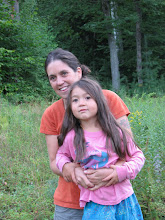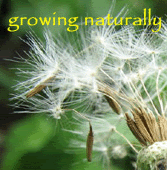
Here is a picture of the plantain flower, a part of this common plant that people do not think about. After talking about Plantain yesterday I went looking for this article I wrote several years ago now for the little book The Cure for What Ails on Plantain.
The wise woman tradition (a phrase coined by Herbalist Susun Weed) encourages us to focus on plants that are common, cheap, widespread to the area in which we live. Plants that grow in abundance, are readily available and nourishing. Plants that grow along the paths we walk, in the fields beside our homes, or under our favorite trees.
Common Plantain
I heard an herbalist tell a story about her grandfather, he too was an herbalist. He lived and practised in the Appalachian mountains. In his many years of practise he only ever used one herb, Ginseng or ‘seng as it is called in the southern mountains. Just one herb?
My teacher, Susun Weed always said that to be an herbalist you only need to know one herb. “yeah right. how good an herbalist would you be?” I always questioned somewhat skeptically, somewhat facetiously, my right brain couldn’t accept the simplicity, “what about all those new 20th century diseases, and all the new types of restraining bacteria and virus autoimmuneiseasetype2diabetesandsyndromxandandand. . .”
Common Plantain helped me grasp that wisdom. It wasn’t like the old Appalachian herbalist just gave Ginseng root tinctured for everything that presented. He knew when to harvest the leaves as opposed to the berries, the stalk or the root and how to prepare them in order to treat all the different conditions, and when to combine the different parts. The more I studied and sat with Plantain the more I could see that this widespread common weed known to the Navajo as “life medicine” was indeed a panacea for all ails.
Her Latin name Plantago major comes from the Latin “Plantago” meaning “sole of the foot” which is often viewed in traditional medicine as a window to one’s general health. She has been used in medicine for over 2000 years, the ancient Greeks used her leaves as a wound medicine, stopping the bleeding and promoting healing, from this we can say it has vulnerary and astringent properties.
Chaucer and Shakespeare also make common references to her as a wound remedy. In those days her common name was “waybreed” referring to her ability to breed in the roadside. Plantain came to America with the Europeans. The Native Americans, observing its spread, named it “white man’s footprint” or “English man’s foot.” Another one of her early names was snakeweed, which suggests that she was helpful in the treatment of venomous snake bites.
The tea made from the leaves which is astringent, antimicrobial, anti-viral, and antitoxic, may also be used as a mouthwash to treat sores, inflammations and infections in the mouth, gums and throat, as well as to relieve toothaches.
The tea may also be used externally as a wash to treat sores, blisters, insect bites and stings, hemorrhoids, burns, rashes, and other skin irritations. Alternatively, a spit poultice (aka chewed up leaves) may be applied to the afflicted area. Plantain salve/oil very rapidly relieves itching and swelling from insect bites, poison ivy rash, and other allergic rashes -a must in a camping first aid kit.
Plantain seeds are very high in mucilage and fiber and can be used as a bulk laxative to relieve diarrhea and entiritis, as they have an affinity for the large intestine. The seeds have a nutty flavor and may be added to a variety of foods or ground into flour. The tea is a cooling, soothing, expectorant rich in mucilage making it a good remedy for the lungs. (In traditional Chinese medicine (TCM) the large intestine and the lungs are connected.)
Her root was traditionally used for headaches, fevers and easing the pain of neuralgia. Plantain is currently being marketed as a stop smoking aid. It is said to cause an aversion to tobacco. A simple home version of this would be to chew on a plantain leaf whenever you feel the need to smoke.
Plantain is edible. The very young leaves can be added to salads, or cooked as greens. Plantain is very high in beta carotene (Vit A) and calcium. It also provides ascorbic acid (Vit C). The leaves become stringy and strongly flavored rather quickly as they age. This does not mean they are no longer edible, only that at this point, they are better suited to making stock or tea. Plantain belongs in the medicine bag of every wise woman healer.









No comments:
Post a Comment